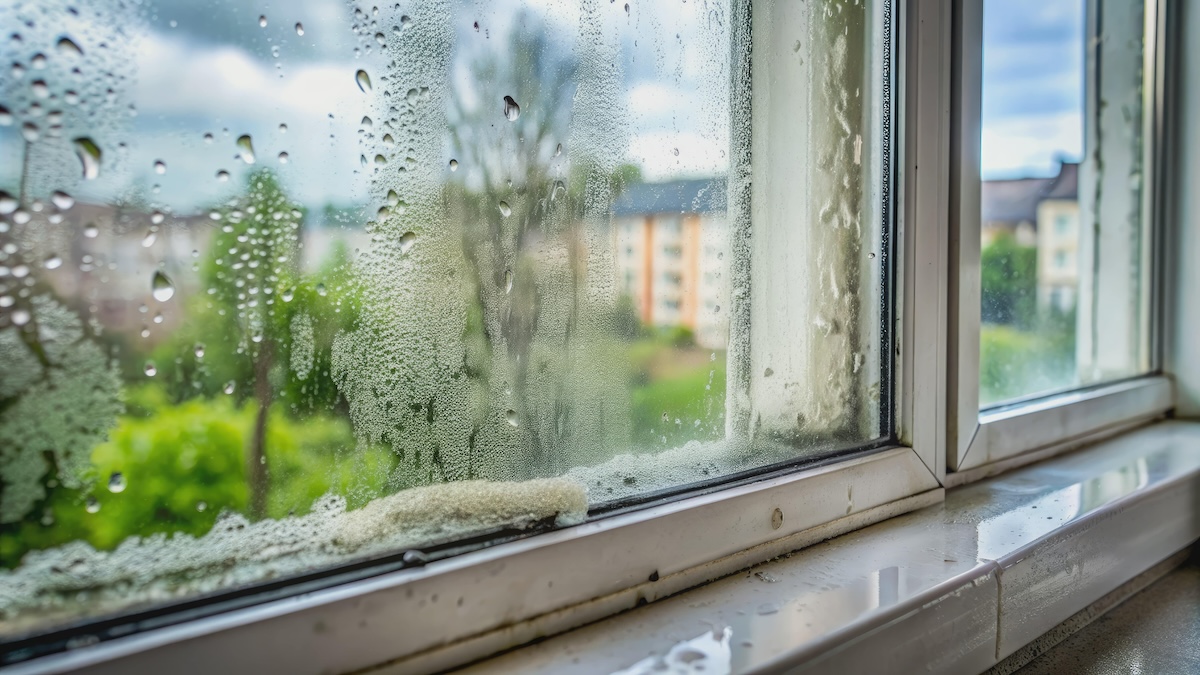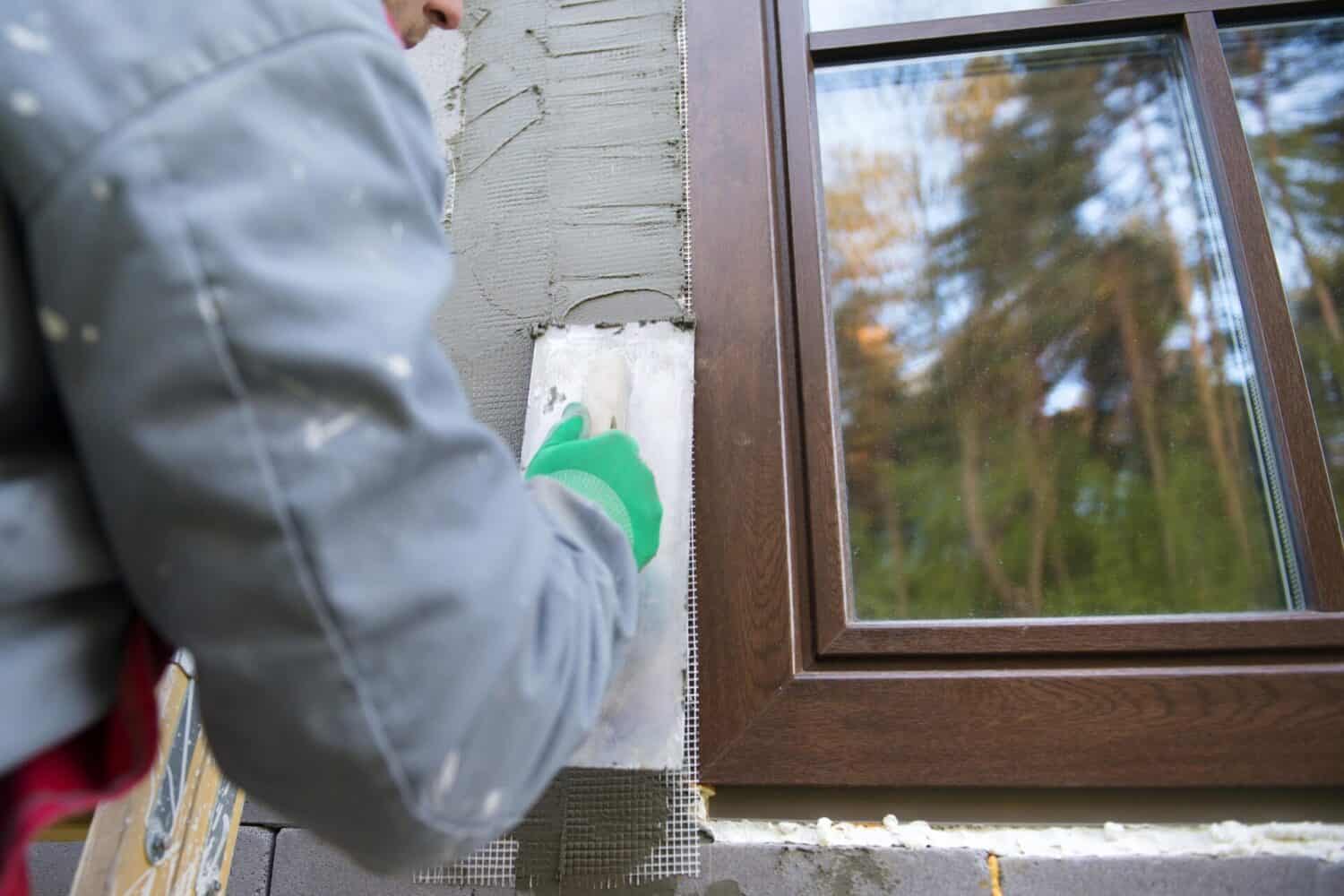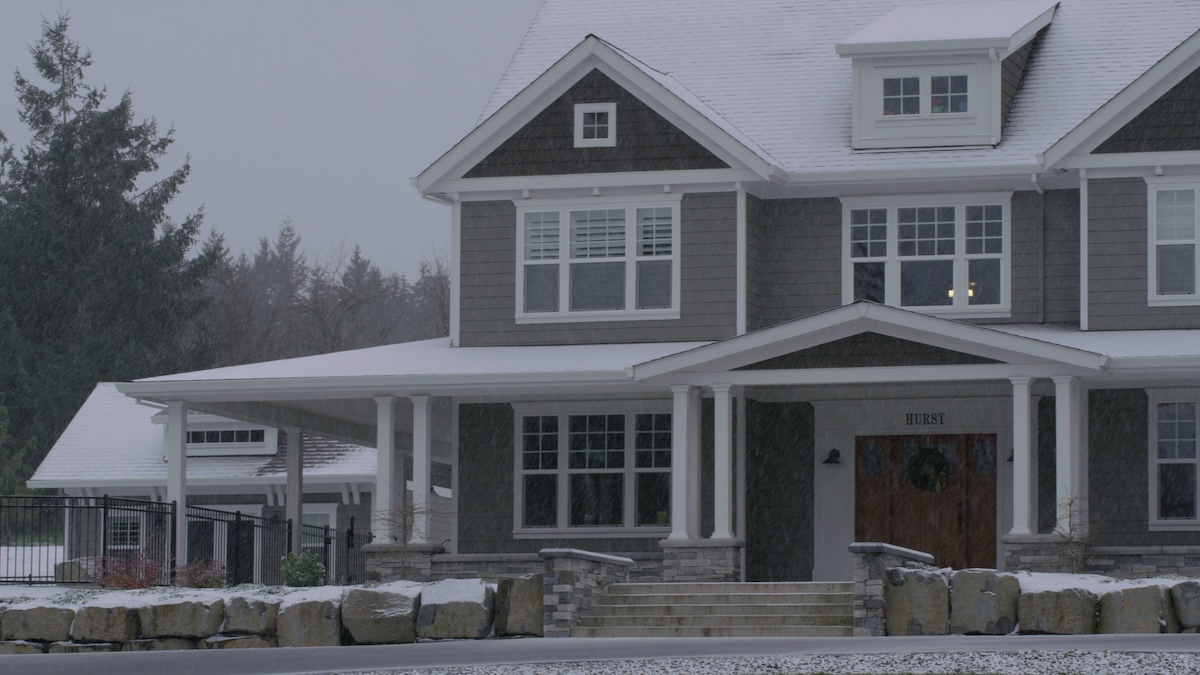Windows play an important role in maintaining your home’s comfort, energy efficiency, and aesthetic appeal. When they function properly, they offer insulation, security, and even noise reduction. However, when worn-out or damaged, home energy loss through windows can occur, along with increased utility bills and compromised structural integrity of your home.
Recognizing the early signs of window failure and knowing when to replace windows can save you from expensive repairs and energy loss. Common indicators include drafts or cold air near windows, condensation trapped between glass panes, difficulty opening, closing, or locking windows, and visible damage like cracks, warping, or rot. You might also notice increased outdoor noise entering your home, fading furniture, carpets, or artwork due to UV exposure, water damage, and even mold around windowsills.
This window replacement guide will help you identify the signs of worn-out windows so you can act before minor issues become costly problems.
Table of Contents:
- Drafts or cold air near windows
- Condensation trapped between glass panes
- Difficulty opening, closing, or locking windows
- Visible damage like cracks, warping, or rot
- Increased outdoor noise entering your home
- Fading furniture, carpets, or artwork due to UV exposure
- Windows that are over 20 years old
- Water damage or mold around windowsills
Common Indicators of Window Failure
1. Drafts or Cold Air Near Windows
Drafts are a telltale sign of drafty windows. Poor seals or gaps in the window frame allow cold air to seep in, leading to discomfort and higher heating costs.
To determine if you have drafty windows, conduct a simple “candle test.” Hold a lit candle near your window’s edges. If the flame flickers, you likely have drafts. Over time, drafts not only affect your home’s energy efficiency but also strain your heating and cooling systems, causing them to work harder and wear out faster. This can result in more frequent maintenance needs and higher long-term expenses.
2. Condensation Between Glass Panes
If you notice window condensation trapped inside double- or triple-pane windows, it’s often due to broken window seals. This not only reduces insulation efficiency but can also lead to mold growth, rot, and further structural damage if left unchecked. Over time, the trapped moisture can degrade the window frame materials, causing warping or weakening of the structure.
Additionally, persistent condensation can obscure your view, reduce natural light, and create an environment conducive to allergens and indoor air quality issues. In severe cases, prolonged moisture exposure can lead to costly repairs, including the need to replace entire window units or address damage to adjacent walls and flooring.

3. Difficulty Opening, Closing, or Locking Windows
If your windows stick, jam, or won’t lock properly, it’s more than just an inconvenience. Warping from moisture damage or failing hardware can compromise your home’s security and ventilation.
In some cases, swelling due to fluctuating temperatures or humidity can cause the frames to expand, making operation difficult. Additionally, rusted or corroded hardware can prevent smooth opening and closing. If your windows require excessive force to operate or if they won’t stay open without support, these are clear indicators of underlying structural issues that warrant immediate attention.
4. Visible Damage Like Cracks, Warping, or Rot
Visible damage like cracked glass, warped frames, or signs of window frame rot prevention failures are clear indicators that your windows are deteriorating. These issues affect insulation, security, and even the structural integrity of your home. Cracks, although repairable, can be safety hazards, while rot often indicates moisture problems that could spread beyond the window and require a full window replacement. Over time, these damages worsen, leading to higher window repair vs replacement costs.
| Type of Damage | Cause | Impact |
| Cracks in glass | Impact, stress, aging | Heat loss, safety hazard |
| Warped frames | Moisture, temperature | Poor sealing, drafts |
| Rotting wood | Prolonged moisture | Structural instability |
5. Outdoor Noise is Louder Than It Used to Be
Is the outside world louder than it used to be? Old or single-pane windows don’t offer much soundproofing. Upgrading to noise-proofing windows can significantly improve indoor comfort, especially if you live near busy streets or airports. When comparing single-pane vs double-pane windows, it’s clear that double-pane options offer superior insulation, noise reduction, and energy efficiency, making them a worthwhile investment for most homeowners. Triple-pane windows can offer even greater noise reduction and thermal performance for those in particularly noisy or extreme climates.
Less Obvious Signs You May Need to Replace Your Windows
Not all window issues are glaringly obvious. Here are subtle signs that may go unnoticed:
6. Fading Furniture, Carpets, or Artwork
Notice fading on your couch or carpets? That’s UV damage. Older windows without UV protection for windows can cause fading, while new ones with Low-E glass block harmful rays without sacrificing natural light. The benefits of Low-E glass go beyond just UV protection; it also improves energy efficiency by reflecting heat, keeping your home cooler in summer and warmer in winter. Additionally, Low-E glass helps maintain consistent indoor temperatures, reducing the strain on your HVAC system and lowering energy costs.
7. Windows That Are Over 20 Years Old
One of the key factors in deciding when to replace windows is their age. Even if they look fine, windows over two decades old are likely inefficient. Modern windows offer better insulation, security, and energy savings while outdated home windows may lack modern insulation technologies. Materials like wood, vinyl, and aluminum have varying lifespans, and after 20 years, they often underperform compared to today’s energy-efficient window upgrades. This underperformance can result in increased energy costs, poor temperature regulation, and reduced overall comfort in your home. Additionally, older windows may not meet current safety standards, making them less secure against break-ins or severe weather conditions.
8. Water Damage or Mold Around Windowsills
Signs of water stains, peeling paint, or mold around windowsills suggest water infiltration, which can lead to significant structural damage over time. If left unchecked, the damage can spread, affecting other areas like flooring, ceilings, and electrical systems. Addressing water infiltration early with energy-saving window replacement not only prevents the risk of costly repairs but also reduces the likelihood of mold growth, which can pose serious health risks such as respiratory issues and allergic reactions.
How Aging Windows Impact Energy Efficiency
Old or inefficient windows can severely impact your home’s energy use and environmental footprint. This includes:
Higher Energy Bills Due to Poor Insulation
Windows with worn seals or single-pane glass allow heat transfer, forcing HVAC systems to work harder. Upgrading to energy-efficient window upgrades can significantly reduce your bills. For example:
| Window Type | Average Energy Cost/Year |
| Single-pane | $1,000 |
| Double-pane (standard) | $750 |
| Energy-efficient (Low-E) | $500 |
Source: Energy Star
Note: These are general estimates and may vary based on factors like climate, home size, and window quality.
- Lower Energy Bills: Improved insulation cuts heating and cooling costs.
- Increased Comfort: No more drafts, hot spots, or noisy distractions.
- Boosted Home Value: Energy-efficient upgrades attract buyers.
- Less Maintenance: Modern materials resist rot and weather damage.
Environmental Impact of Inefficient Windows
Inefficient windows contribute to higher carbon emissions by allowing heat to escape in the winter and infiltrate during the summer, forcing heating and cooling systems to work harder. This excessive energy consumption not only increases utility bills but also places a strain on power grids, contributing to the overall carbon footprint of your home.
Switching to residential window upgrades with ENERGY STAR ratings significantly reduces this issue. These energy-efficient windows are designed to provide better insulation, reducing the demand for HVAC systems and keeping your home comfortable year-round. By enhancing your home’s energy performance, ENERGY STAR windows help lower your overall energy usage, directly contributing to a reduction in greenhouse gas emissions.
Hot and Cold Spots in Your Home
Poor insulation from old windows causes uneven indoor temperatures, leading to uncomfortable hot or cold spots in various areas of the home. These temperature fluctuations can make it difficult to maintain a consistent climate, especially in rooms with large or outdated windows.
Modern window insulation, especially in double or triple-pane windows, features advanced materials that trap air between the panes, significantly improving thermal performance. This insulation helps to create a more even indoor temperature by blocking heat transfer, keeping the warmth inside during winter and preventing hot air from entering during the summer. As a result, homeowners experience a more comfortable living environment throughout the year, with fewer temperature extremes in different rooms.
Read More: Winter Window Maintenance: Best Ways to Winterize Your Home
Benefits of Replacing Old Windows
Replacing aging windows offers numerous advantages beyond energy efficiency. Some benefits include:
Improved Energy Efficiency
Modern windows with double- or triple-pane glass, argon gas fills, and Low-E coatings drastically reduce heat loss, lowering your energy costs by providing superior insulation. The multiple layers of glass in double- and triple-pane windows create air pockets that act as buffers, slowing the transfer of heat between the interior and exterior of the home. Argon gas, a non-toxic, colorless gas inserted between the panes, further enhances insulation by reducing heat conduction and preventing cold air from seeping in.
Additionally, Low-E coatings are thin, invisible layers that reflect infrared light, keeping heat inside during colder months and blocking harmful UV rays that can cause fading of furniture and fabrics.
Enhanced Comfort and Noise Reduction
Upgraded windows provide better temperature regulation and reduce external noise, greatly enhancing your indoor living experience. This results in a home that stays cooler in the summer and warmer in the winter, allowing you to enjoy a comfortable living space year-round without over-relying on your HVAC system.
Whether you’re dealing with traffic sounds, neighborhood activity, or environmental noise, modern windows with soundproofing capabilities can significantly dampen these disturbances.
Boosted Home Resale Value
Energy-saving window replacement increases property value by making your home more attractive to potential buyers. Energy-efficient windows offer long-term cost savings on utility bills, along with improved insulation and temperature regulation. These windows also enhance curb appeal, adding a sleek, modern look that appeals to buyers.
Additionally, they signal to potential buyers that the home has been well-maintained and can reduce future maintenance concerns. With the added benefit of meeting green building standards, energy-efficient windows make your property more marketable, potentially leading to higher offers and a quicker sale.
Reduced Maintenance
Materials like vinyl and fiberglass require less upkeep compared to older wooden windows, which are prone to rot, warping, and decay due to moisture exposure. Vinyl and fiberglass windows are highly resistant to the elements, making them ideal for long-term durability. Unlike wood, which can require frequent sanding, sealing, and repainting, these materials maintain their appearance and functionality with minimal maintenance.
Additionally, these materials are less prone to mold or mildew buildup, further reducing maintenance requirements.
How to Get Started with Window Replacement
If you’ve identified any of these signs, it’s time to consider replacing your windows. Start with the following:
Consult a Professional Installer
While DIY projects can be tempting, improper window installation can lead to gaps, poor insulation, and water leaks, which may compromise the energy efficiency and structural integrity of your home. If windows aren’t correctly installed, they can allow drafts to enter, causing uncomfortable temperature fluctuations and increased energy costs. Additionally, poor installation can result in water infiltration, leading to potential mold growth, wood rot, or even foundation damage.
Working with professionals ensures that windows are properly fitted, sealed, and aligned, preventing these issues. Experienced installers also have the necessary tools and expertise to handle any challenges that arise during the installation process, guaranteeing that your windows will perform at their best for years to come.
Take Advantage of Rebates or Incentives
Many government programs offer incentives for energy-efficient window upgrades, making it more affordable to improve your home’s energy performance. These incentives can include rebates, tax credits, or low-interest financing options that help offset the upfront cost of new windows. Local utilities often partner with government programs to provide additional rebates for homeowners who replace outdated windows with energy-efficient models.
Don’t Ignore the Warning Signs
Recognizing the signs of worn-out windows early and understanding when to replace windows can save you money and improve your home’s comfort. From drafty windows to cracked window frames, addressing these issues promptly ensures your home remains energy-efficient and secure.
For more information, check out our window reviews and our window installation solutions. We’d be happy to discuss with you your options when it comes to window replacement vs. window repair for your home or business.
Replacing your windows is more than an aesthetic upgrade—it’s an investment in your home’s future. Don’t wait until minor issues become major problems. Start your window replacement project today!


